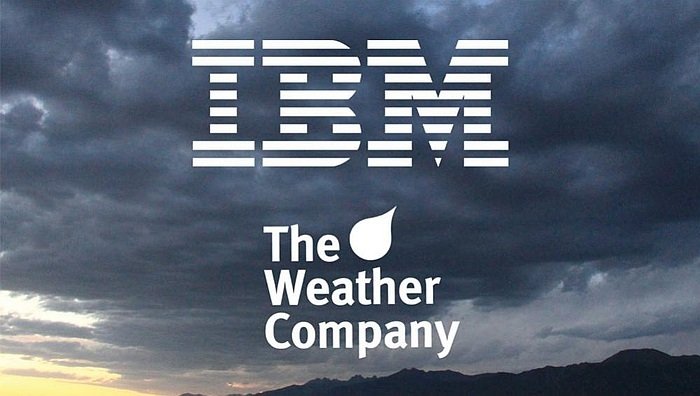Weather is one of the most unpredictable variables in farming. A sudden storm, an unexpected drought, or even a slight shift in seasonal patterns can make or break your harvest. And yet, most weather apps are built for cities—not farms.
Enter AI-powered weather forecasting tools.
Thanks to advances in artificial intelligence, small-scale farmers now have access to accurate, hyperlocal weather forecasts, tailored agricultural alerts, and even recommendations for planting and irrigation. These tools are low-cost—or even free—and easy to use on a smartphone.
In this chapter, we’ll break down the best AI weather tools for micro-farms, how they work, and how they help farmers make better decisions daily.
The Problem with Traditional Weather Forecasts
Most weather data comes from national meteorological services or consumer apps like AccuWeather or The Weather Channel. These services typically rely on forecasts generated for cities or large regions. For a farmer working 2 acres outside a rural town, those forecasts can be wildly inaccurate.
Traditional Forecast Limitations:
- Too general: One forecast may cover 50+ km radius.
- Time lags: Updates may be delayed or not reflect sudden shifts.
- Not tailored to agriculture: They tell you it’ll rain—but not if it’s enough to skip irrigation or affect spraying.
How AI Weather Tools Work for Small Farms
AI weather forecasting tools combine:
- Satellite data
- Local sensor readings
- Historical climate patterns
- Machine learning algorithms
- Real-time user feedback
They can detect microclimate shifts, predict risks, y offer insights specific to your location, crop type, and farm conditions.
AI-based forecasts often learn over time, meaning their accuracy improves the more you use them.
Top AI-Powered Weather Tools for Small-Scale Farmers
Here are the most effective low-cost (or free) AI weather forecasting tools tailored to smallholder agriculture:
1. PlantVillage Nuru by Penn State University

🌍 Regions Supported: Global (with strong presence in Africa, Asia)
💸 Cost: Gratis
📱 Platform: Android
🌟 Key Features:
- AI-based crop disease and pest detection
- Hyperlocal weather forecasting
- Push alerts for rainfall and droughts
- Offline support for remote areas
✅ Best For:
Small-scale farmers growing maize, cassava, potato, and legumes in developing regions.
🔗 Download on Google Play
2. IBM’s The Weather Company (Precision Agriculture Tools)

🌍 Regions Supported: Global
💸 Cost: Freemium (enterprise features cost more)
📱 Platform: Web and App integrations
🌟 Key Features:
- AI-generated hyperlocal forecasts down to 500m
- Decision support for spraying and fertiliser use
- Real-time weather alerts and trend analytics
✅ Best For:
Farm cooperatives, extension agents, and commercial growers wanting deep insight.
🔗 Explore IBM Weather Solutions
3. aWhere Weather Intelligence

🌍 Regions Supported: Over 90 countries
💸 Cost: Free trial / low-cost plans for individuals
📱 Platform: Web dashboard + API
🌟 Key Features:
- 9km x 9km grid forecasts
- Crop-specific alerts based on phenology
- Daily evapotranspiration, soil moisture, and rainfall estimates
- Pest and disease risk predictions
✅ Best For:
Farmers who want precise climate data and access to deeper agri-analytics.
🔗 Visit aWhere
4. Tomorrow.io (formerly ClimaCell)

🌍 Regions Supported: Global
💸 Cost: Free tier + Pro plans
📱 Platform: Android / iOS / Web
🌟 Key Features:
- Minute-by-minute weather forecasts
- Custom alerts (e.g., “wind over 20km/h”, “spray risk”)
- AI risk alerts for weather-sensitive tasks
✅ Best For:
Small farmers who need hyperlocal rain and wind warnings for decision-making.
🔗 Download App
5. Weather Risk Protect (India)
🌍 Regions Supported: India
💸 Cost: Gratis
📱 Platform: SMS, IVR, and App
🌟 Key Features:
- AI-based weather and crop advisory via voice or SMS
- Drought alerts and pest control suggestions
- Supports 9 regional languages
✅ Best For:
Farmers without smartphones or in low-bandwidth areas.
🔗 Learn More
Comparison Table: AI Weather Tools for Small Farmers
| Tool | Cost | Best Region | Key Features | Caso de uso |
|---|---|---|---|---|
| PlantVillage Nuru | Gratis | Global | AI forecast + disease detection | Rural farmers in Africa/Asia |
| IBM Weather | Freemium | Global | 500m AI forecast, agri support | Co-ops & large plots |
| aWhere | Low-cost | Global | Grid forecasting + crop insights | Advanced weather tracking |
| Tomorrow.io | Free/Pro | Global | Minute-level forecasts | Spray timing, storm alerts |
| Weather Risk (India) | Gratis | India | Voice/SMS AI alerts | Non-smartphone users |
Benefits of AI Weather Forecasting for Small Farms
🧠 Smarter Planting Schedules
Know the ideal window to sow your seeds—not just based on the calendar, but real-time moisture and temperature data.
💦 Improved Irrigation Planning
Get AI alerts on when to water based on rainfall probability, humidity, and soil data. Save water, time, and energy.
🌾 Lower Pest and Disease Risk
Some tools (like aWhere or Nuru) warn you when your crop is at risk of fungal growth, blight, or pest outbreaks—before they happen.
🚜 Better Input Timing
Don’t waste fertiliser or pesticides when rain is coming. AI tools notify you of spray-friendly windows or wind speed issues.
📈 Reduced Yield Loss
By combining hyperlocal weather and crop models, small farmers can reduce losses from adverse conditions by up to 30%.
Real Farmer Success Stories
👨🏽🌾 Samuel, 4-acre rice farmer in Ghana
“I used to guess when the rains would come. Now with Nuru, I planted 10 days earlier, and the rains came right on time. I saw a 22% increase in yield.”
👩🏾🌾 Meera, tomato grower in India
“The voice-based weather alerts helped me shift irrigation during a dry spell. I avoided cracking in my tomato fruits and saved water.”
👨🏼🌾 Luis, greenhouse farmer in Mexico
“Tomorrow.io’s alerts helped me avoid spraying before a storm. I saved 1,000 pesos worth of pesticide in one season.”
How to Choose the Right Tool for Your Farm
✅ Step 1: Know Your Connectivity
- No smartphone? Use SMS or IVR-based tools like Weather Risk.
- Low bandwidth? Use lightweight apps or apps with offline caching.
✅ Step 2: Know Your Crops
- Are you growing maize or cassava? Try Nuru.
- Vegetables or greenhouse crops? Tomorrow.io or aWhere is better.
✅ Step 3: Set Your Goals
- Need basic rain alerts? Go simple.
- Want to increase precision y plan input use? Try premium AI-based dashboards.
Tips to Get the Most From AI Weather Tools
- Turn on notifications in your app—don’t miss time-sensitive alerts.
- Cross-check forecasts from two tools for reliability.
- Use data weekly, not just in emergencies.
- Combine with physical observations for better accuracy.
- Share insights with neighbours or co-ops—weather patterns often affect entire communities.
Integrating AI Weather Tools into Farm Routine
| Activity | Tool Use |
|---|---|
| Monday field check | Open app for 7-day forecast |
| Midweek spray planning | Check for rain/wind timing |
| Friday irrigation schedule | Review soil moisture + evapotranspiration |
| End of month | Track growing degree days (GDD) or crop model stage |
What’s the ROI of Using These Tools?
Many small farmers report:
- 10–30% increase in yield
- 15–40% savings on fertiliser or water
- Fewer crop losses from weather-related damage
And with most tools being free or under $5/month, the return on investment is very high even for subsistence farmers.
Conclusion: Predict the Unpredictable
For too long, small-scale farmers had to “farm by faith” when it came to the weather. But not anymore.
With today’s AI weather tools, you don’t just react—you plan. Whether it’s planting on time, saving water, or stopping a pest outbreak before it starts, these apps give you knowledge, confidence, and control.
Even on a 1-acre plot, the right weather data can make the difference between surviving and thriving.
✅ Your Action Plan:
- 🔍 Choose a weather tool from the list above
- 📲 Install the app or subscribe to SMS alerts
- 🧪 Test the forecasts for a week
- 🧑🌾 Adjust farm activities based on insights
- 📢 Share the tool with your local network
📖 Coming Next in the Rendimientos más inteligentes Serie:
Chapter 6: How Image Recognition Apps Help Detect Crop Diseases Early (Even Without an Agronomist)


